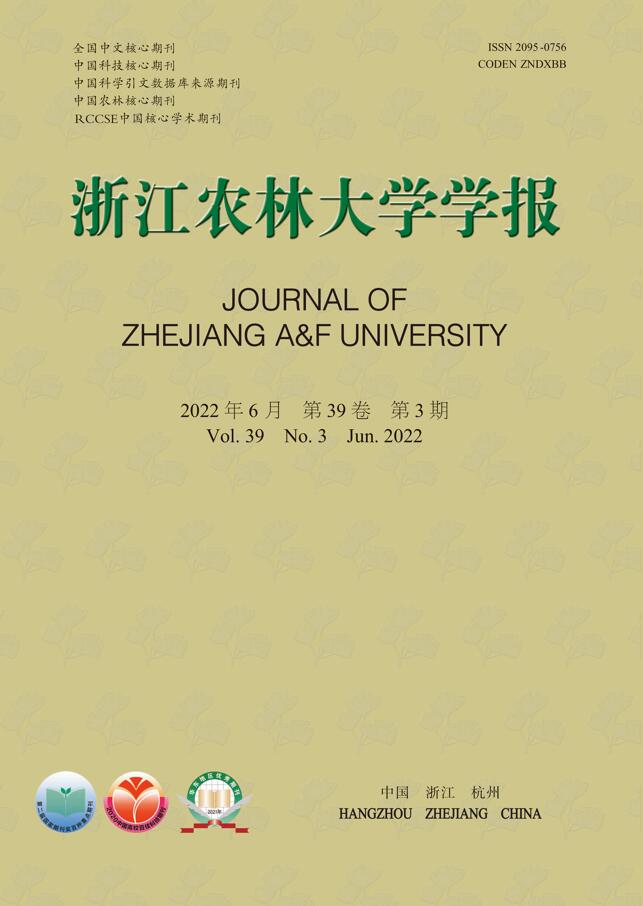-
据世界旅游组织(UNWTO)统计,受新型冠状病毒引发的肺炎疫情(新冠疫情)影响,2020年国际游客数量比2019年下降73%,约10亿人次,国际旅游收入损失1.3万亿美元。疫情改变了旅游行为方式[1],使游客旅游目的地偏好发生明显变化[2]。疫情暴发后游客更倾向于自然风光类、休闲度假类与历史文化类的旅游产品[3],放松、观光、文化是游客出游的主要动机[4]。在实施最严格保护的前提下,探究自然保护地旅游资源的可持续利用,是现阶段自然保护地体系所面临的现实问题[5]。生态旅游是中国自然保护区可持续发展的战略选择[6],但国内自然保护区生态旅游发展处于初级阶段[7]。如何加强自然保护区生态旅游资源的保护与开发利用,避免由资源消耗型向环境破坏型和景观浪费型转变[8],需要加强生态旅游资源与其他类型旅游资源和产业的融合[9],构建高品质、多样化的旅游产品体系。现阶段中国自然保护地生态旅游产品以观光旅游、休闲度假为主,科普、科考、探险、观鸟等专项生态旅游产品[10]颇受欢迎,生态旅游客源市场日益向专业化、多样化、个性化发展。加强对生态旅游消费行为特征的研究[11],把握当前及今后旅游消费者的偏好和选择意愿,可促进生态旅游产品供给与需求的有效匹配[12]。
旅游偏好是人们对旅游产品的认知和价值评价的结果,与旅游决策、旅游行为关系密切[13]。了解显示性偏好(revealed preference,RP)与陈述性偏好(stated preference,SP)是定量研究旅游偏好的前提和基础,显示性偏好关注消费者选择了哪些产品或服务,而陈述性偏好关注消费者将要选择哪些产品或服务[14],国外研究者多关注2种偏好数据的检验和比较 [15-16],国内有部分学者应用陈述性偏好法研究了旅游者的需求偏好[17-18],但在旅游偏好与旅游需求、旅游感知、旅游动机与行为等相互关系上报道较少[19]。新冠疫情暴发后,学者开始关注自然保护地(区)生态旅游消费行为特征和生态旅游产品偏好,探讨生态旅游产品陈述性偏好与显示性偏好的关联性。本研究以浙江省天目山国家级自然保护区为例,对比了疫情暴发前后自然保护区游客生态旅游特征,分析疫情后生态旅游产品偏好特征,为提升自然保护区提供生态旅游产品与服务水平,满足游客对生态旅游高质量休闲体验的需求等,提供现实依据。
-
浙江天目山国家级自然保护区位于浙江省杭州市临安区天目山镇,总面积4 284 hm²。区内植被景观独特,动植物种类丰富,分布多种珍稀、濒危、特有、孑遗物种,主要森林植被以“高、大、古、稀、多”称绝,素有“大树王国”“物种基因库”之称。天目山自然保护区1986年被批准为“国家级森林和野生动物类型自然保护区”,1996年成为联合国教科文组织“人与生物圈”保护区网络成员,现为中国生物多样性保护示范基地、国家级自然保护区示范单位、全国科普教育基地、全国青少年科技教育基地、国家AAAA级景区。
-
2004年12月,天目山自然保护区与浙江大华建设集团有限公司正式签订旅游资源依法保护、开发和特许经营协议,天目山生态旅游转变为以企业法人为经营主体、保护区管理局为管理主体的新体制[20]。2005—2007年景区游客数量迅速上升,年均增长率达36.97%;2008—2020年景区游客数量总体呈现缓慢下降趋势,年均增长率为−5.23%;2020年,新冠肺炎疫情暴发,年接待量仅为7.19万人次,为历史最低。天目大峡谷景区2014年被天目山景区收购,2019年游客接待量达到最高,为15.86万人次,2020年锐减到6.55万人次。
自然保护区生态旅游收入主要由景区门票、餐饮住宿、自然教育和旅游车队经营收入等组成。总体来看,门票收入、旅游车队经营收入与游客接待人数变化趋势基本一致。自2016年开始,自然学校、幻住山房茶室、大树堂餐厅、知了酒店等相继营业,虽在总体旅游收入中占比不大,但表现出良好的成长性。2020年因疫情影响除大树堂餐厅收入略有增长,其他均不同程度下降。
-
参考相关研究成果[21-22],结合对自然保护、生态旅游领域专家的咨询,设计调查问卷。问卷第一部分,调查游客对自然保护区生态旅游产品的陈述性偏好、出游目的、频次、时段等生态旅游需求特征;第二部分调查游客信息渠道、出游方式、逗留时间、旅游消费、食宿设施选择、问题认知等生态旅游行为特征,及对自然保护区生态旅游产品的显示性偏好;第三部分调查游客居住地、性别、年龄、受教育程度、职业、月收入等游客个人信息。2019年10月2—6日发放问卷300份,收回300份,有效问卷234份,有效率为78.00%。2020年10月2—6日发放问卷300份,收回300份,有效问卷251份,有效率为83.67%。生态旅游产品陈述性偏好、显示性偏好均采用Likert 5级测量,1级最低,5级最高。
-
应用SPSS 23.0软件统计疫情暴发前后天目山保护区游客人口学特征;两独立样本的秩和检验(Mann-Whitney U检验)[23]分析疫情暴发前后游客生态旅游需求、行为特征;单因素方差法分析疫情暴发后游客生态旅游产品的陈述性偏好、显示性偏好特征。
分析疫情暴发后生态旅游产品陈述性偏好对显示性偏好的影响效应。先按保护区生态旅游产品亚类陈述性偏好水平的均值进行降维和分级,即均值1.00~1.49时为1,1.50~2.49为2,2.50~3.49为3,3.50~4.49为4,4.50~5.00为5;比较各陈述性偏好等级对应的显示性偏好水平,采用K-S方法检验其分布,若满足正态分布,则使用独立样本T检验,反之使用Mann-Whitney U检验[23]。
-
由表1可知:相比2019年,疫情暴发后的2020年,自然保护区游客以男性为主;职业以企业人员为主,军人增幅最大,学生、离退休人员减少明显;20岁以下游客增加较明显,20~29岁游客减少较明显;大专或大学本科学历游客占比最高,略有下降;各收入段游客变化不明显。
特征 分项 占比/% 特征 分项 占比/% 2019年10月 2020年10月 2019年10月 2020年10月 性别 男 41.9 57.4 年龄/岁 <20 4.3 14.7 女 58.1 42.6 20~29 38.5 28.7 30~39 26.9 31.9 职业 公务员 6.8 6.8 40~49 15.4 16.3 私营企业主 6.8 12.0 50~59 11.1 6.0 企业人员 33.8 28.3 ≥60 3.8 2.4 文教/专业技术人员 8.1 14.3 自由职业 15.0 2.4 受教育程度 高中及以下 20.9 18.7 服务/销售人员 5.6 6.0 大专或本科 73.1 65.7 军人 0.4 24.7 研究生及以上 6.0 15.5 学生 10.7 1.2 工人 1.3 0.4 月收入/元 ≤5 000 40.2 33.1 农民 1.7 2.4 5 001~10 000 33.3 30.3 离退休人员 3.0 14.3 10 001~15 000 15.0 17.1 其他 6.8 0 15 001~24 999 4.3 9.6 ≥25 000 7.3 8.0 Table 1. Demographic characteristics of visitors before and after COVID-19
-
由表2可知:疫情暴发前后游客去往自然保护区旅游频次、旅游时段差异极显著(P<0.01),而旅游目的差异不显著。疫情暴发后游客自然保护区旅游的时间以小长假、黄金周最多,依次为周末、工作日,其中周末出游略有减少;多数游客旅游目的为自然山水观光,疫情后以增进身体健康为目的明显增加,陪伴家人、朋友出游的比例增加较明显。
特征 分项 占比/% P 特征 分项 占比/% P 2019年10月 2020年10月 2019年10月 2020年10月 旅游频次/
(次·a−1)1 18.8 16.3 0.01** 旅游目
的(多选)自然山水风光 67.9 76.1 0.20 2 53.0 38.2 观赏动植物 20.5 25.9 3 17.1 29.1 缓解紧张情绪 37.6 33.5 ≥4 11.1 16.4 学习生态知识 12.4 9.6 增进身体健康 7.7 41.8 旅游时段 周末 33.8 29.1 0.00** 了解历史文化 34.2 18.3 小长假、黄金周 54.2 55.7 户外运动探险 19.2 14.7 工作日 6.0 9.2 陪伴家人、朋友 34.2 51.0 暑假 6.0 6.0 其他 0 6.4 说明:**表示差异极显著(P<0.01) Table 2. Ecotourism demand characteristics of visitors before and after COVID-19
-
由表3可知:疫情对游客了解自然保护区的信息渠道、交通方式、旅游花费影响极显著(P<0.01),而组织方式、旅游时长、选择食宿设施类型、存在问题等其他生态旅游行为特征均无显著影响。疫情暴发后,游客获取信息渠道以亲朋介绍、“旧地重游”较多,家庭自驾游数量明显增加;出游以一日游为主,二日游游客明显减少;相比2019年,2020年人均消费500~999元的游客减少较明显,人均消费2 000元以上的游客明显增加。参与性、娱乐性不强,接待设施不完善,交通不便被认为是生态旅游发展存在的主要问题。
特征 分项 占比/% P 特征 分项 占比/% P 2019年10月 2020年10月 2019年10月 2020年10月 了解渠道
(多选)微信微博 38.5 37.1 0.01** 食宿
类型农家乐 34.2 22.3 0.71 旅行社 24.8 13.5 民宿 41.0 29.1 亲朋介绍 43.6 53.0 酒店 17.5 15.9 曾经参与 9.8 23.5 其他 7.3 5.6 杂志报纸 9.8 9.2 其他 7.7 10.4 旅游花
费/元≤500 34.6 41.9 0.00** 500~999 33.3 7.2 组织方式 跟团 16.2 2.0 0.35 1 000~1 499 17.5 17.9 独自 23.1 17.1 1 500~1 999 5.6 6.4 家庭游 37.2 76.5 ≥2 000 9.0 26.6 单位组织 23.5 4.4 存在
问题
(多选)交通不便 38.5 23.5 0.10 交通方式 公共交通 7.7 8.0 0.00** 接待设施不完善 20.9 28.3 自驾 58.1 86.1 服务质量差 2.1 3.2 旅游大巴 34.2 6.0 参与性、娱乐性不强 34.6 31.9 有害生物威胁 2.6 3.2 旅游时长/d 1 41.9 49.4 0.33 当地人不友好 1.3 0.8 2 41.0 28.7 其他 17.1 9.1 3 12.8 18.7 ≥4 4.3 3.2 说明:**表示差异极显著( P<0.01) Table 3. Ecotourism behavior characteristics of visitors before and after COVID-19
-
游客人口学特征对部分生态旅游产品的陈述性偏好存在显著性差异。由表4可知:天气与气候景观(观星象、观冰雪、观日出、观雾凇、雨凇)、森林度假产品(小木屋、树屋)、自然教育产品(自然课堂、自然艺术创作)和生态康养产品(森林浴、森林瑜伽、森林冥想)等产品,不同性别游客的陈述性偏好差异显著(P<0.05)或极显著(P<0.01);观鸟、观星象、树屋等产品,不同年龄段游客陈述性偏好差异显著(P<0.05)或极显著(P<0.01);观冰雪、民宿、森林瑜伽等产品,不同受教育程度的游客陈述性偏好差异显著(P<0.05)或极显著(P<0.01);观星象、树屋、丛林穿越、溯溪攀岩等产品,不同职业的游客陈述性偏好差异显著(P<0.05)或极显著(P<0.01);观日出、观云雾、观星象、观冰雪、树屋、自然艺术创作等产品,不同收入的游客陈述性偏好差异显著(P<0.05)或极显著(P<0.01)。
产品主类 产品亚类 产品名称 性别 年龄 受教育程度 职业 月收入 偏好均值 生态观光 地文景观 观奇峰异石 0.09 0.58 0.99 0.58 0.87 3.10 水域景观 观瀑布溪流 0.45 0.13 0.15 0.11 0.35 3.88 生物景观 观鸟 0.67 0.05* 0.37 0.58 0.38 3.23 观蝶 0.92 0.34 0.28 0.43 0.13 2.92 观珍稀植物 0.43 0.95 0.98 0.80 0.41 3.61 观森林景观 0.96 0.70 0.20 0.74 0.52 3.88 天象与气候景观 观日出 0.01** 0.09 0.09 0.06 0.00** 4.05 观云雾 0.11 0.18 0.07 0.19 0.00** 4.20 观星象 0.04* 0.00** 0.93 0.00** 0.00** 3.81 观冰雪 0.03* 0.31 0.01* 0.33 0.01* 3.94 观雾凇、雨凇 0.00** 0.15 0.07 0.51 0.43 3.85 生态度假 森林度假 小木屋 0.00** 0.13 0.27 0.30 0.23 3.45 帐篷露营 0.36 0.09 0.91 0.05 0.28 3.15 汽车露营 0.26 0.29 0.88 0.23 0.24 2.99 树屋 0.00** 0.00** 0.16 0.01** 0.00** 3.40 度假酒店 0.62 0.24 0.32 0.28 0.61 3.82 乡村度假 民宿 0.22 0.55 0.01** 0.25 0.23 3.80 农家乐 0.47 0.33 0.77 0.09 0.90 3.10 专项生态 自然教育 自然课堂 0.01* 0.40 0.34 0.02* 0.65 3.22 自然艺术创作 0.00** 0.39 0.52 0.12 0.03* 3.19 生态康养 森林浴 0.02* 0.30 0.47 0.09 0.28 3.46 森林瑜伽 0.00** 0.44 0.04* 0.35 0.31 3.01 森林冥想 0.05* 0.19 0.29 0.35 0.11 3.28 户外运动 丛林穿越 0.17 0.64 0.55 0.04* 0.39 3.59 溯溪攀岩 0.90 0.14 0.86 0.05* 0.47 3.43 户外拓展 0.75 0.13 0.96 0.29 0.45 3.45 说明:*表示差异显著(P<0.05);**表示差异极显著(P<0.01) Table 4. Differences in demographic characteristics of visitors’ stated preferences for ecotourism products after COVID-19
-
由表5可见:游客人口学特征对天目山自然保护区部分生态旅游产品的显示性偏好存在显著性差异。对倒挂莲花峰、五世同堂古银杏Ginkgo bibloba、大树王柳杉Gryptomeria japonica、白鹇Lophura nycthemera及其栖息地等景点,不同年龄段游客显示性偏好有显著差异(P<0.05);对半月池景点,不同受教育程度的游客显示性偏好有极显著差异(P<0.01);对眠牛石景点,不同职业的游客显示性偏好有显著性差异(P<0.05)。
产品主类 产品亚类 生态旅游产品 性别 年龄 受教育程度 职业 月收入 偏好均值 生态观光 地文景观 天目大峡谷 0.81 0.40 0.19 0.47 0.55 4.37 冰川大峡谷 0.92 0.92 0.05 0.52 0.59 4.52 倒挂莲花峰 0.30 0.05* 0.08 0.15 0.90 3.88 四面峰 0.11 0.25 0.60 0.73 0.78 3.93 眠牛石 0.70 0.28 0.33 0.03* 0.71 3.88 红蛇洞 0.74 0.08 0.18 0.08 0.57 3.94 水域景观 双清潭 0.92 0.41 0.32 0.08 0.82 3.88 半月池 0.34 0.12 0.00** 0.10 0.06 3.66 伏虎瀑 0.90 0.48 0.11 0.09 0.76 4.11 生物景观 原始森林 0.70 0.49 0.88 0.44 0.84 4.33 柳杉群 0.49 0.69 0.49 0.17 0.29 4.24 五世同堂古银杏 0.07 0.03* 0.27 0.66 0.35 4.26 大树王柳杉 0.46 0.01* 0.29 0.97 0.43 4.45 冲天树金钱松 0.23 0.31 0.91 0.73 0.59 4.21 天目铁木 0.29 0.38 0.84 0.99 0.52 4.33 黑麂及其栖息地 0.06 0.18 0.66 0.40 0.24 4.45 白鹇及其栖息地 0.05 0.03* 0.77 0.80 0.75 4.48 专项生态 自然教育 自然博物馆 0.74 0.31 0.74 0.95 0.73 4.51 大地之野自然学校 0.30 0.21 0.42 0.90 0.84 4.31 说明:*表示差异显著(P<0.05);**表示差异极显著(P<0.01)。金钱松 Pseudolarix amabilis,天目铁木 Ostrya rehderiana,黑麂 Muntiacus crinifrons Table 5. Differences in demographic characteristics of visitors’ revealed preferences of ecotourism products after COVID-19
-
由表6可见:总体上,随着游客对保护区生态旅游产品的陈述性偏好等级增加,其对天目山保护区生态旅游产品的显示性偏好水平也相应提高,说明陈述性偏好水平对显示性偏好水平有显著影响。多重比较分析表明:将游客对自然保护区生态旅游产品的陈述性偏好等级分为5级时,天目山保护区地文景观、水域景观、生物景观和自然教育产品的显示性偏好,根据显著性水平只有相应的3、3、4和4级,说明游客对生态旅游产品的陈述性偏好与显示性偏好存在不一致现象,且前两者的陈述性偏好对显示性偏好的影响效应比后两者小。
陈述性偏
好等级显示性偏好水平 地文景观 水域景观 生物景观 自然教育产品 1 2.58±0.92 c 1.72±1.16 c 2.50±1.52 cd 1.91±1.30 d 2 3.26±0.82 b 3.28±1.14 ab 3.32±0.91 d 3.04±1.00 c 3 3.45±0.78 b 3.16±0.89 b 3.83±0.74 c 3.44±1.06 c 4 3.83±0.69 a 3.46±0.94 a 4.11±0.73 b 3.88±0.88 b 5 3.59±1.09 ab 3.53±1.10 a 4.51±0.58 a 4.46±0.90 a 说明:同列不同小写字母表示不同等级间差异显著(P<0.05) Table 6. Effects of revealed preferences on stated preferences of ecotourism products after COVID-19
-
2015年开始天目山自然保护区调整经营思路,走内涵发展道路,开发生态旅游、自然教育、文化创意等新型业态。2018年起以接待散客为主,积极开辟新兴市场。2016—2019年接待游客数量下降明显,但同期自然保护区生态旅游收入呈上升趋势,说明其他生态旅游业态的发展弥补了生态观光旅游下降带来的损失。
疫情暴发后,保护区游客从以女性为主转变为以男性为主,20岁以下游客明显增加、20~29岁游客减少较明显,以大专或大学本科学历的游客占比最高;游客多为通过亲朋介绍、“旧地重游”者,家庭自驾游数量增加,团队游明显减少,倾向于一日游或多日游,人均消费较高的游客比例增加较明显。选择小长假、黄金周出游的人数最多,主要以自然山水观光和增进身体健康为目的,多数为陪伴家人、朋友出游。
疫情暴发后,游客性别、年龄、受教育程度、职业、收入等人口学特征对部分生态旅游产品陈述性偏好有显著影响;年龄、受教育程度、职业对部分产品显示性偏好水平有显著影响。游客对保护区生态旅游产品的显示性偏好水平随着陈述性偏好等级增加而提高,陈述性偏好水平对显示性偏好水平有显著影响;天目山保护区游客对生态旅游产品的陈述性偏好与显示性偏好存在不一致现象,生物景观和自然教育产品的陈述性偏好对显示性偏好的影响效应,比地文景观和水域景观更明显。
-
后疫情时代,旅游业要积极应对挑战,增强创新发展动力,发挥产业融合的叠加效应、追求在线融合的乘数效应,共建共生推动旅游业高质量发展[24]。因此,从以下几个方面提出天目山自然保护区生态旅游产品的开发建议:一是利用游客家庭自驾、社交休闲、山水观光、生态康养、自然教育等生态旅游产品陈述性偏好水平高的特点,开展观鸟、森林康养等特色项目,融合创新产品引导全新需求,提供多元化、高品质的生态旅游产品供给,增强游客的显示性偏好水平,提升其满意度与推荐、重游意愿。二是自然保护区应充分认识新趋势、融合新技术,依托5G、VR、AR等技术推出智慧化生态旅游产品服务,引导自然保护区从需求侧进行产品创新。比如将自然保护区大尺度山体植被垂直景观带、偶见性强的珍稀动植物等,通过“云旅游”多维度、多视角传递给潜在旅游者,增强其陈述性偏好,推动其向现实旅游者转化。三是自然保护区积极利用大数据分析手段,发挥“两微一短”(微信、微博、短视频)用户受众面广、黏性强特点,针对周边客源市场选择合适的媒体平台,加强游客生态旅游产品体验后的分享,刺激潜在需求,提升潜在消费者生态旅游产品的陈述性偏好水平。
Ecotourism consumption behaviors of visitors to Mount Tianmu National Nature Reserve in the post-pandemic era
doi: 10.11833/j.issn.2095-0756.20210356
- Received Date: 2021-05-10
- Accepted Date: 2022-01-26
- Rev Recd Date: 2022-01-26
- Available Online: 2022-05-23
- Publish Date: 2022-05-23
-
Key words:
- ecotourism /
- characteristics of consumption and behavior /
- revealed preferences /
- stated preferences /
- COVID-19
Abstract:
| Citation: | MENG Minghao, GU Xiaoyan, CUI Guofa. Ecotourism consumption behaviors of visitors to Mount Tianmu National Nature Reserve in the post-pandemic era[J]. Journal of Zhejiang A&F University, 2022, 39(3): 679-686. DOI: 10.11833/j.issn.2095-0756.20210356 |









 DownLoad:
DownLoad: